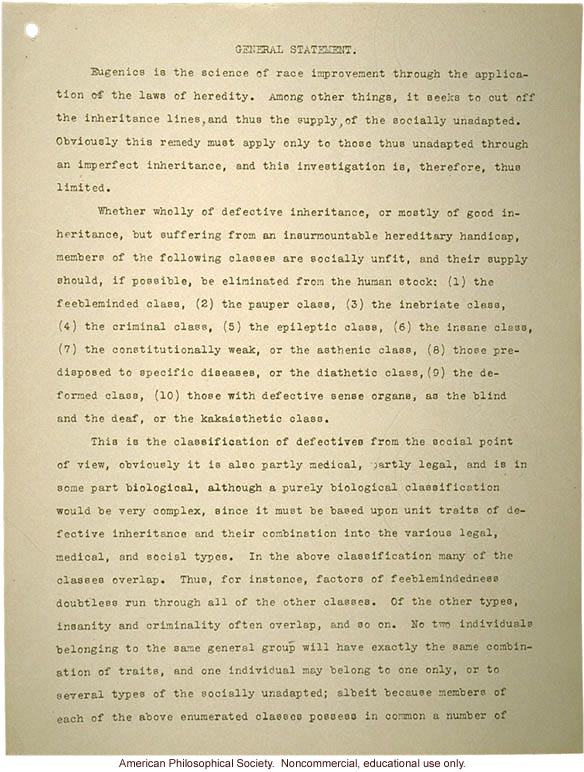(Image 536 is companion to image 537)
General Statement.
Eugenics is the science of race improvement through the application of the laws of heredity. Among other things, it seeks to cut off the inheritance lines, and thus the supply, of the socially unadapted. Obviously this remedy must apply only to those thus unadapted through an imperfect inheritance, and this investigation is, therefore, thus limited.
Whether wholly of defective inheritance, or mostly of good inheritance, but suffering from an insurmountable hereditary handicap, members of the following classes are socially unfit, and their supply should, if possible, be eliminated from the human stock: (1) the feebleminded class, (2) the pauper class, (3) the inebriate class, (4) the criminal class, (5) the epileptic class, (6) the insane class, (7) the constitutionally weak, or the asthenic class, (8) those predisposed to specific diseases, or the diathetic class, (9) the deformed class, (10) those with defective sense organs, as the blind and the deaf, or the kakaisthetic class.
This is the classification of defectives from the social point of view, obviously it is also partly medical, partly legal, and is in some part biological, although a purely biological classification would be very complex, since it must be based upon unit traits of defective inheritance and their combination into the various legal, medical, and social types. In the above classification many of the classes overlap. Thus, for instance, factors of feeblemindedness doubtless run through all of the other classes. Of the other types, insanity and criminality often overlap, and so on. No two individuals belonging to the same general group will have exactly the same combination of traits, and one individual may belong to one only, or to several types of the socially unadapted; albeit because members of each of the above enumerated classes possess in common a number of


